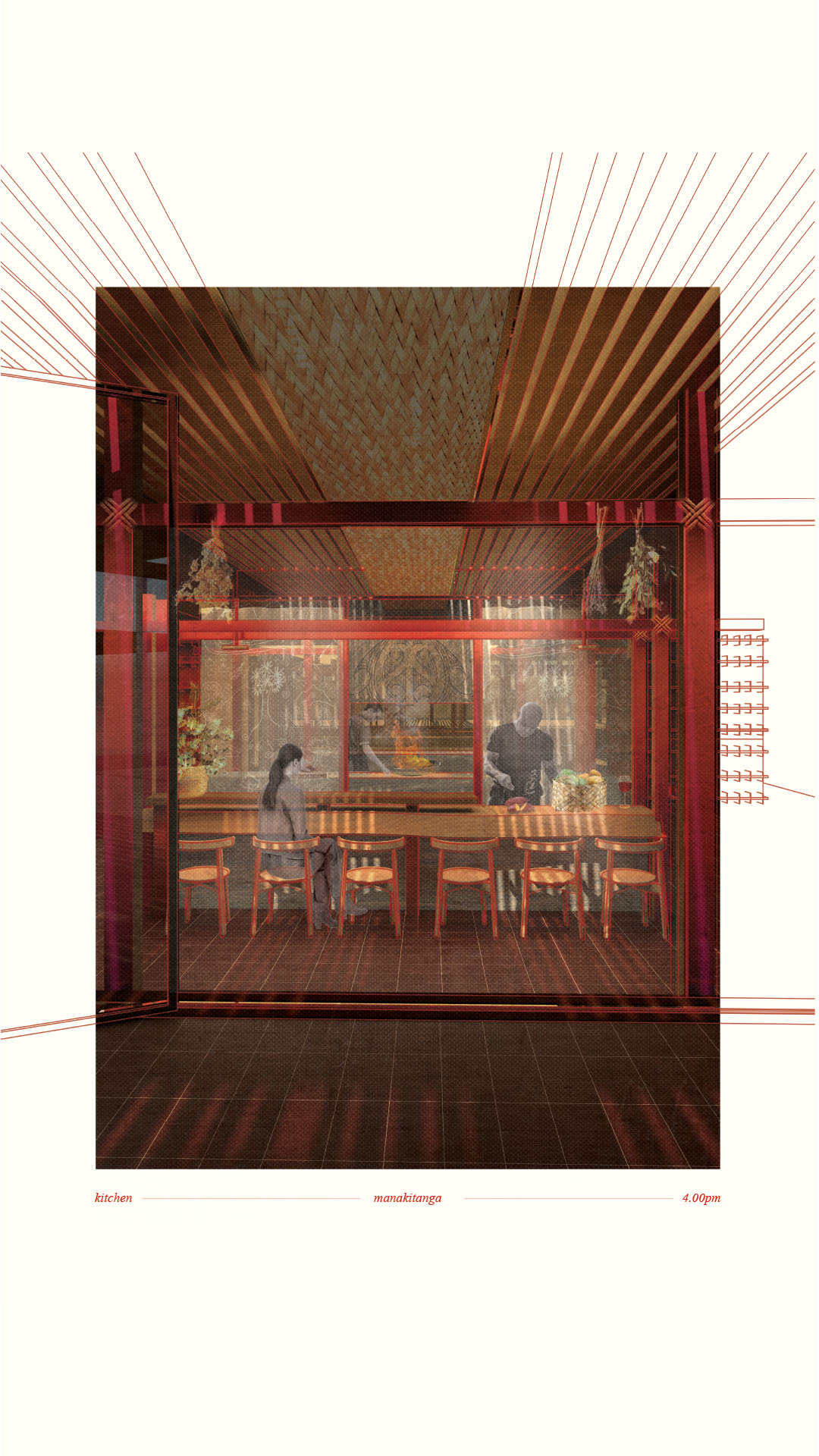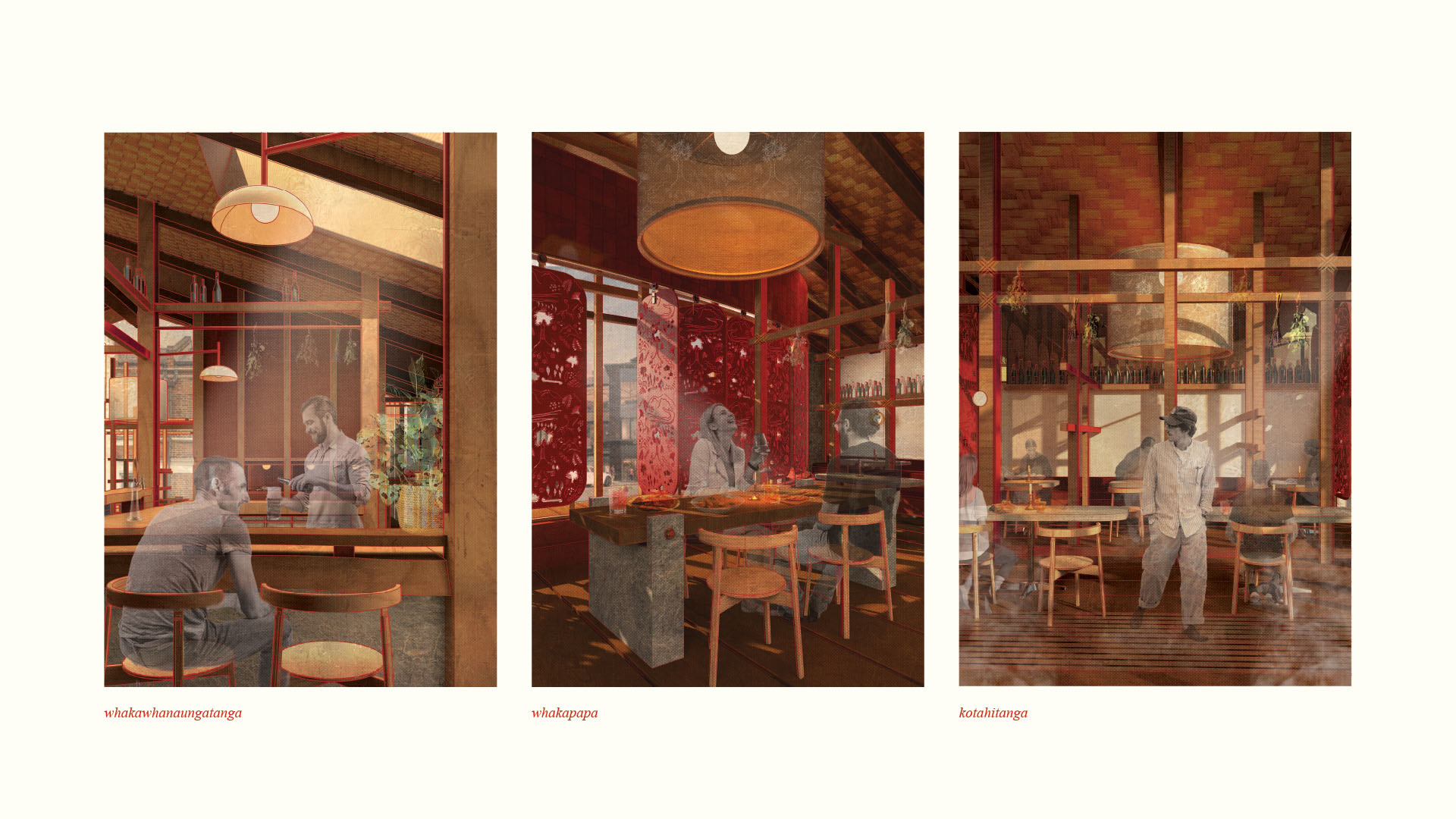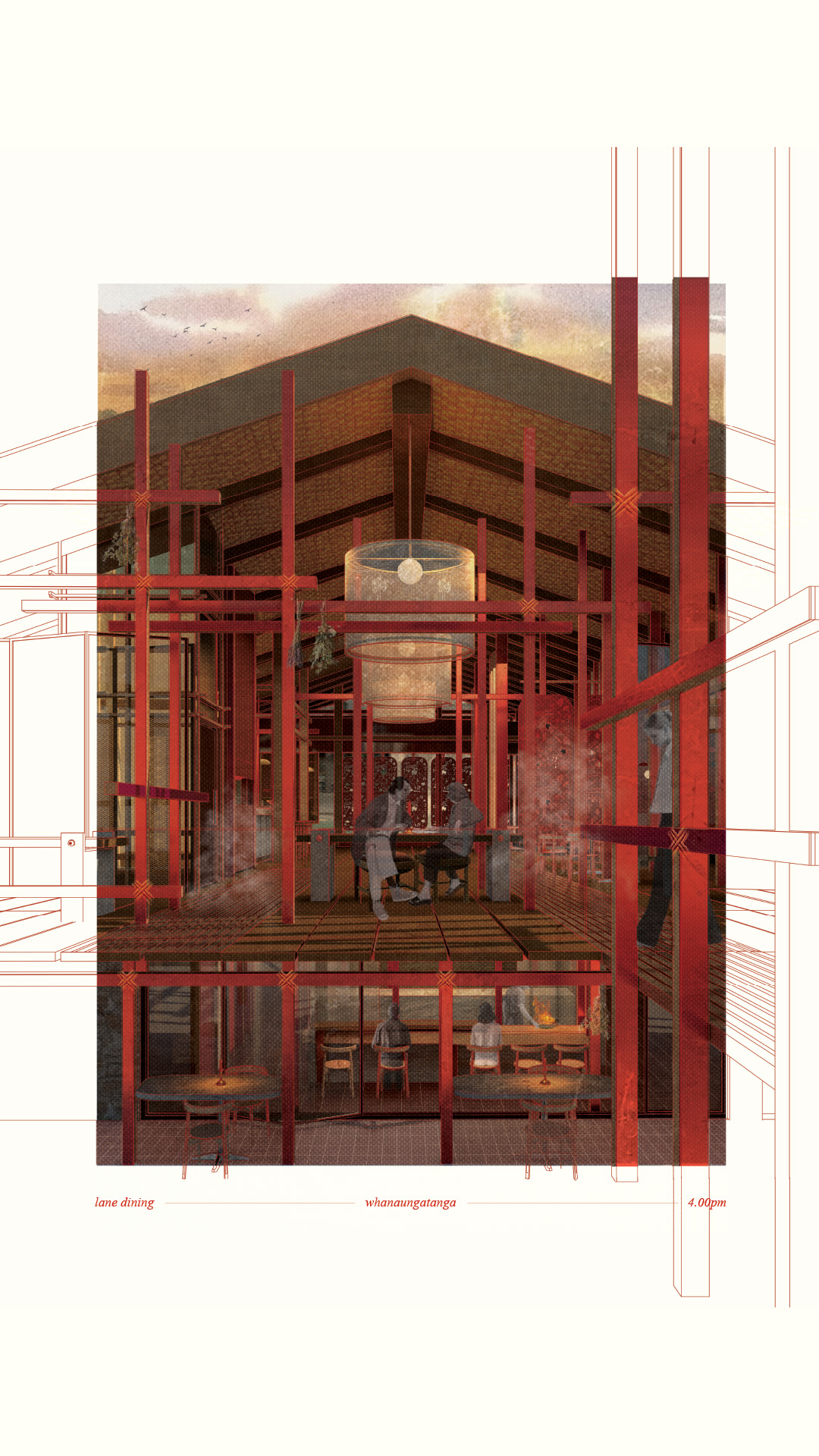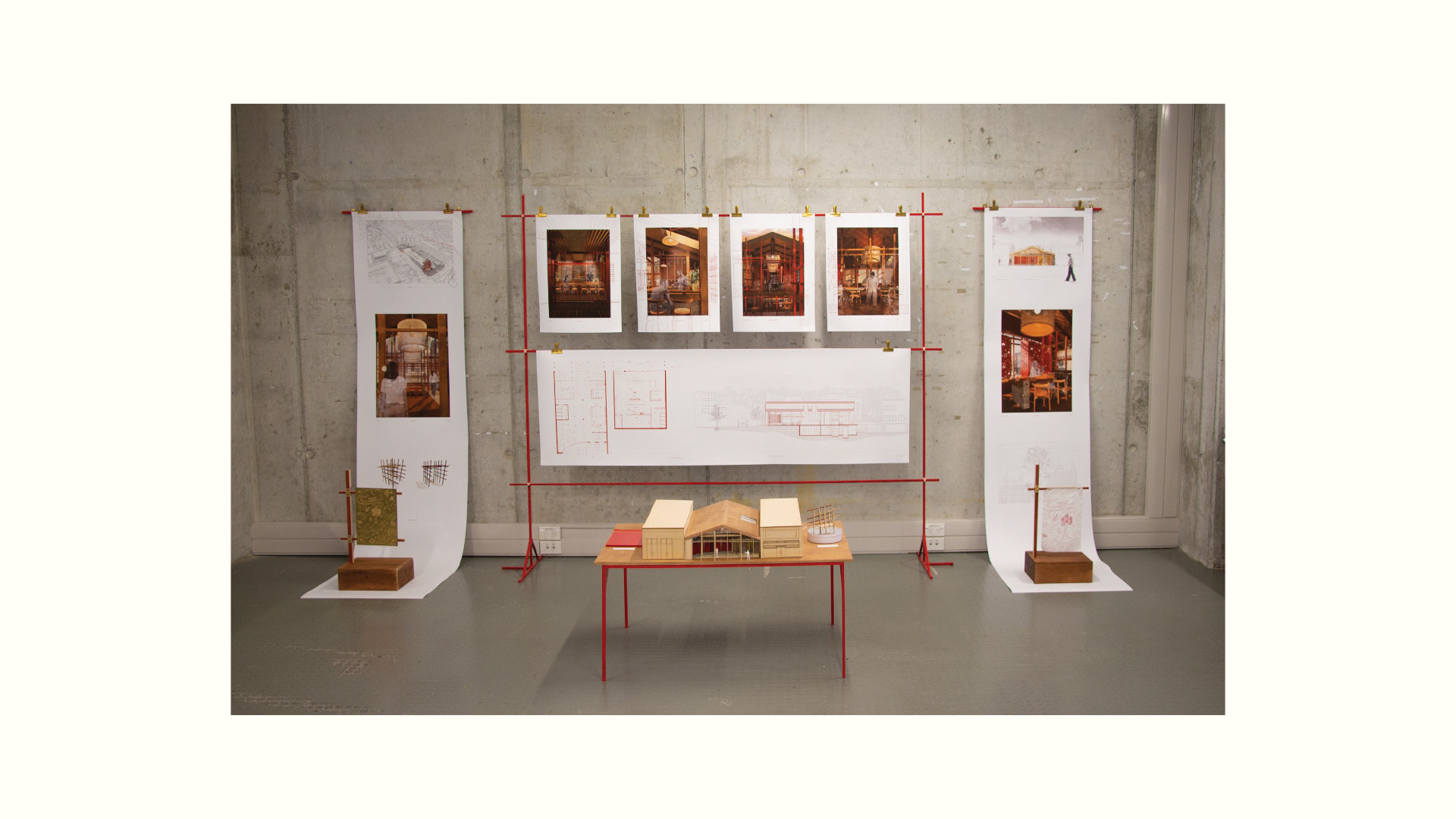
Grace Wright
Wherowhero
A structure of two sides, two halves that refuse to settle. So close to another yet so concealed from each other. A spatial half caste. Shifting ground, shifting perspective. To see and be seen.
I started this semester off with a vision of a shifting surface, either side carrying the weight of bicultural turmoil. Where one side was present the other was missing, the two sides concealed from one another, split and unable to coexist. Now as my perspective shifts, I see the surface was forged from the same material, sharing the same makeup. They are part of each other, different, but one. My design aims to spatialise this instability. One side deep red, carrying mana, whakapapa and history, the other, timber, connecting to material, structure and urban environment.
Whero Whero, a contemporary wharekai, allowing two cultural gazes to coexist without resolution. Timber lattice forms scaffold the space. Hakari formations were misinterpreted as “scaffolding.” I imagined steam rising from cooked mutton birds and kumara, concealing timber framing. Scaffold is cold and urban, hakari rich and warm.
This wharekai hums with energy, a place of nourishment and reconnection, for anyone negotiating whakapapa, identity, and gaze. It nourishes not only the body but the bicultural fabric of Tāmaki Makaurau.




